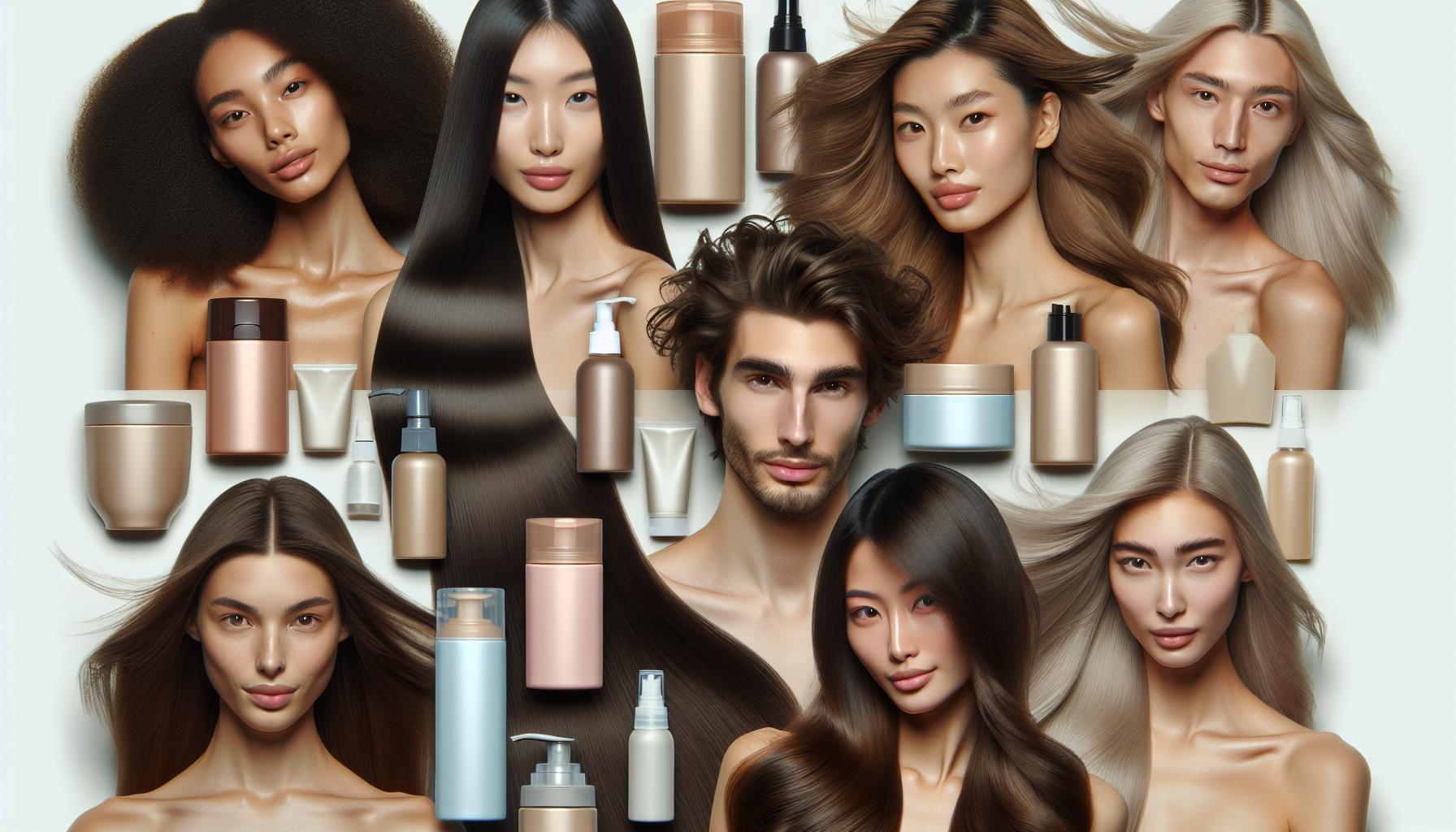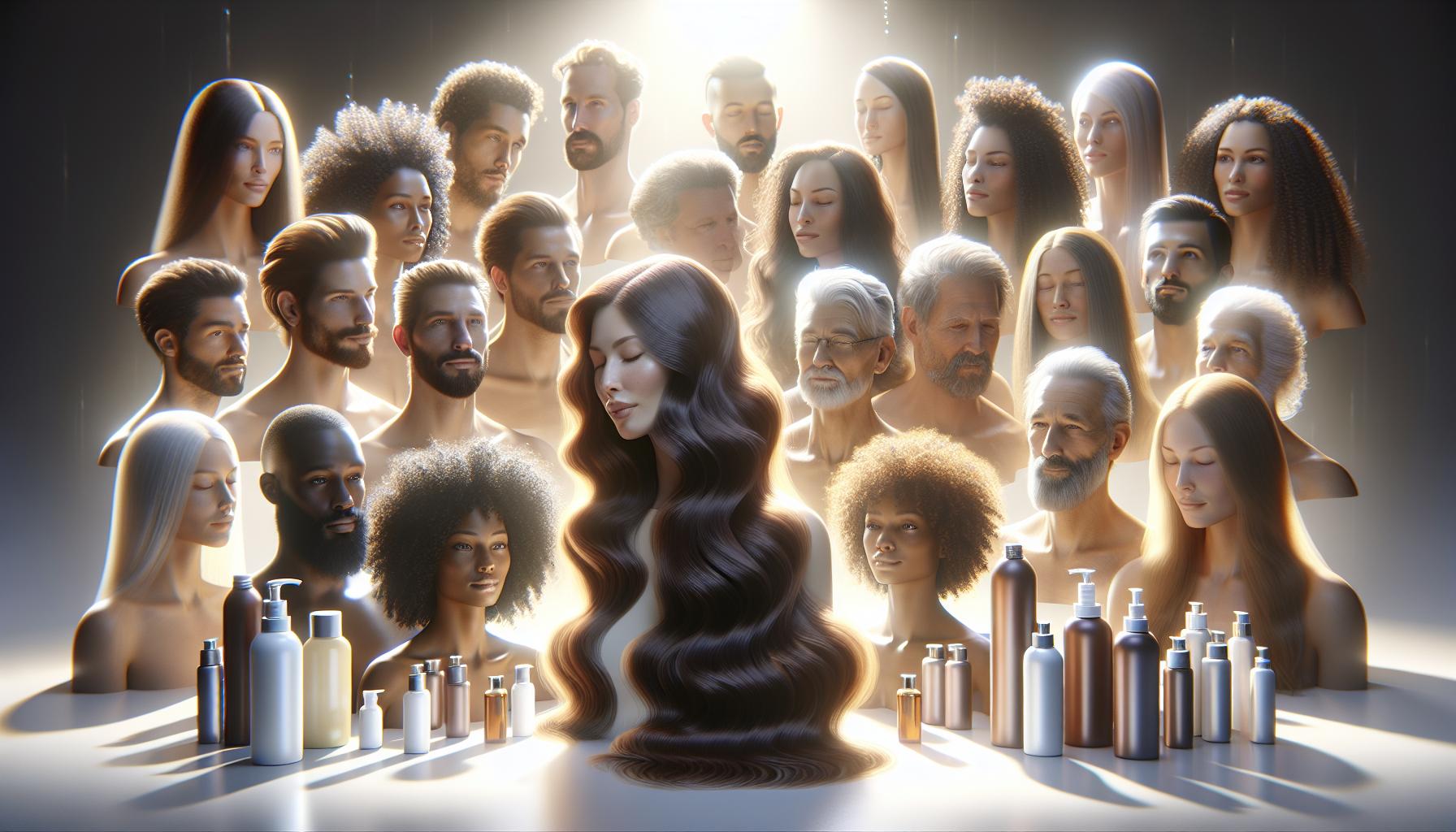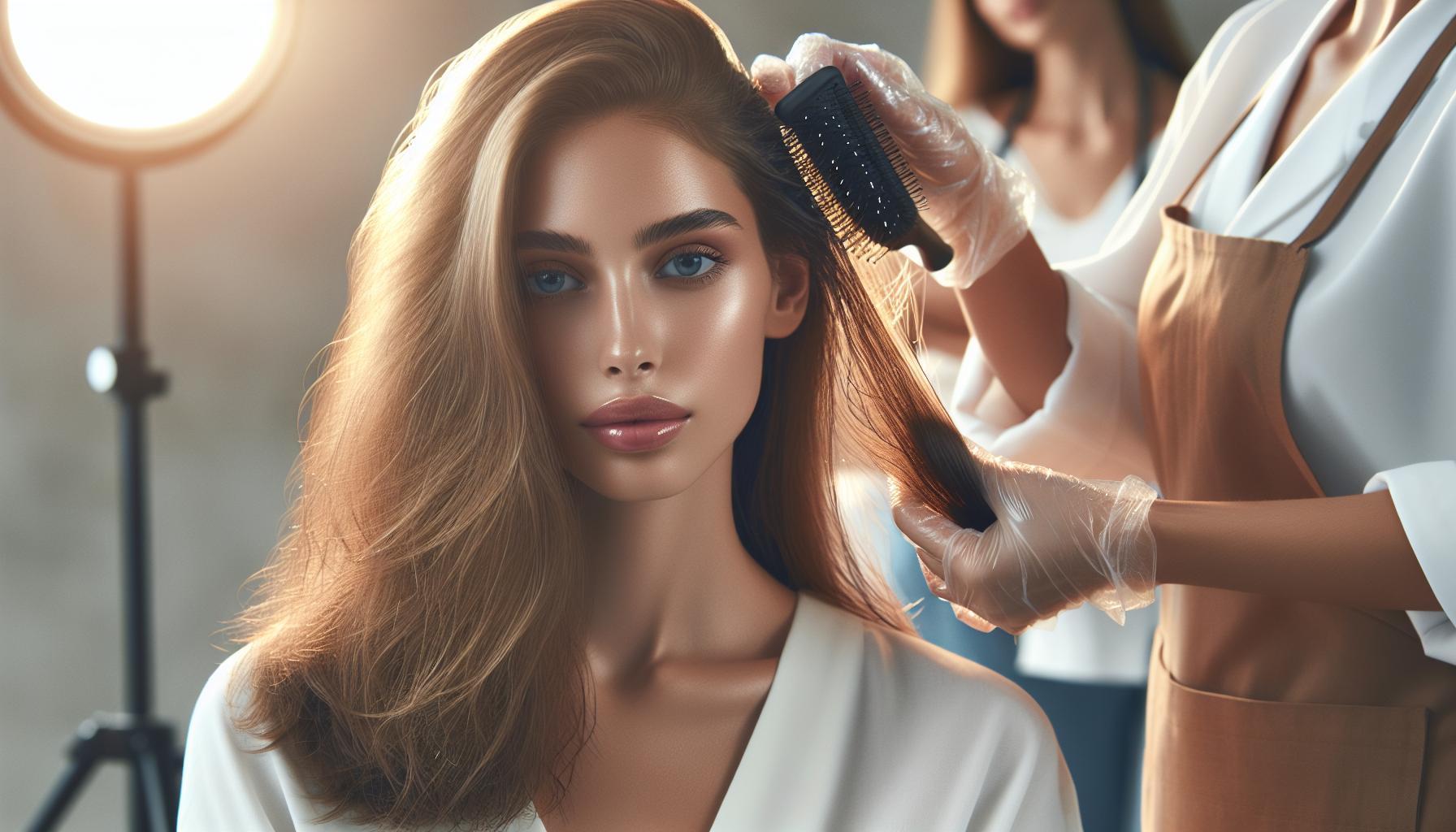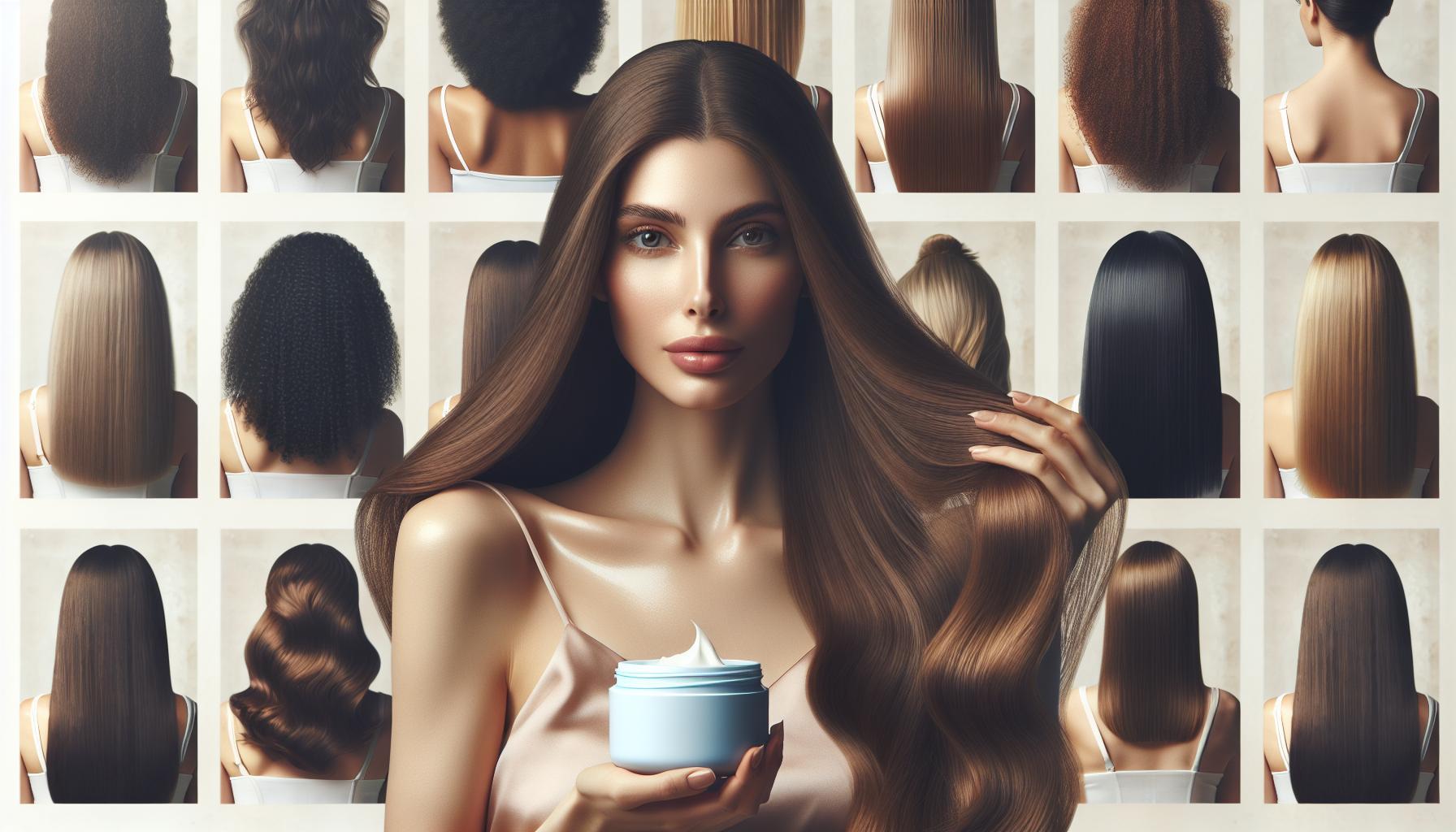Are you sacrificing the health of your hair for the sake of style? While hair gel can create defined looks,concerns about potential damage linger. Understanding the safety of styling products is crucial for maintaining hair health without compromising on aesthetics. Let’s delve into the facts surrounding hair gel and its effects on your locks.
Contents
- Understanding Hair Gel: How it effectively works and Its Ingredients
- The Impact of Hair Gel on Hair Health: Myths vs. Facts
- Common concerns: Does Hair Gel Cause Hair Loss or Damage?
- Choosing the Right Hair Gel: What to Look For
- How to Use Hair Gel Safely for Different Hair Types
- Alternatives to hair Gel: Exploring Hair Styling Options
- Caring for Your Hair After Using Gel: Tips for Recovery
- The Role of Professional Advice in Hair Care Decisions
- Frequently asked questions
- Is Hair Gel Bad for Your hair?
- Is Hair Gel Bad for Your Hair?
- What are the ingredients in hair gel that can damage hair?
- Can I use hair gel every day?
- Why does my hair feel sticky after using gel?
- Does hair gel cause hair loss?
- How to choose the best hair gel for my hair type?
- What alternatives exist to hair gel for styling?
- The Conclusion
Understanding Hair Gel: How it effectively works and Its Ingredients
Hair gel has been a staple in styling routines for decades, adored by many for its ability to create structured hairstyles that last throughout the day. But have you ever wondered how this seemingly magical product achieves such extraordinary results? The secret lies in its formulation. By understanding the science behind hair gel and its ingredients, you can make informed decisions about using styling products while considering their safety implications.
the Science Behind Hair Gel
At its core, hair gel is designed to provide hold and control over your hair’s shape and style. It does this through a combination of polymers and solvents that create a film around each hair strand, providing structure without rigidity. This film allows for flexibility, enabling your hair to maintain its style while resisting humidity and environmental factors that can cause frizz or droopiness.The key ingredients in most gels include:
- Polymers: These form the primary binding agents in hair gels. They can either be natural, like starches and gums, or synthetic, like polyvinylpyrrolidone (PVP) or acrylates.
- Alcohol: Often included to help control the product’s consistency and drying time. While it can provide a lightweight feel, excessive alcohol can be drying to your hair.
- Additives: These may include vitamins, oils, or fragrances to enhance the gel’s performance and scent. Some brands also incorporate ingredients that can help with moisture retention.
Ingredient Breakdown and Safety Considerations
To explore the safety of using hair gel, particularly in the context of the ongoing debate surrounding “is Hair gel Bad for Your Hair? Styling Product Safety Facts,” consider this simplified ingredient breakdown:
| Ingredient | Function | Potential Concerns |
|---|---|---|
| Polymers | Provide hold and structure | Generally safe; some may cause buildup |
| Alcohol | Enhances drying and consistency | Can be drying, leading to brittleness |
| Fragrance | Adds appealing scent | May cause irritation for sensitive skin |
| Preservatives | increase shelf life | Potential for allergic reactions |
Choosing a hair gel that suits your hair type and styling needs while being mindful of its ingredients can prevent common problems like dryness or buildup. Opting for alcohol-free formulas or gels enriched with natural moisturizing agents can be beneficial for maintaining hair health, especially if you’re questioning the impact of these products on your hair’s integrity. As you navigate the world of hair grooming, the best approach is to experiment cautiously and observe how different formulations interact with your unique hair type.
The Impact of Hair Gel on Hair Health: Myths vs. Facts
Many individuals use hair gel to achieve their desired hairstyles, but there are numerous misconceptions regarding the implications of this styling product on hair health. While hair gel can provide a sleek look, the essential question remains: is hair gel bad for your hair? Understanding the facts amid the myths can help you make informed choices about your hair care routine.
Common Myths Surrounding Hair Gel
Various myths circulate about hair gel’s effects on hair, frequently enough leading to unnecessary fears about this ubiquitous product. Some prevalent myths include the belief that hair gels universally lead to hair loss, or that they can cause an unhealthy buildup that suffocates the scalp. However, these ideas are not always rooted in fact. Here are a few common myths and the truths that dispel them:
- Myth 1: Hair gel causes hair to fall out.
- Truth: Hair loss can result from numerous factors, including genetics, health issues, and poor hair care practices, rather than the use of hair gel itself.
- Myth 2: All hair gels dry out and damage hair.
- Truth: While some gels contain harsh alcohols that may dry hair, many modern formulas include moisturizing ingredients that can actually benefit hair health.
- Myth 3: gel use leads to excessive buildup that can harm the scalp.
- Truth: proper cleansing methods can prevent buildup. Using a clarifying shampoo periodically helps maintain scalp health.
Understanding the Facts
evaluating the ingredients in hair gel can significantly influence its effects on your hair. Many gels today include nourishing components such as botanical extracts, proteins, and vitamins designed to maintain hair moisture and shine.To distinguish between beneficial and harmful products, consider examining the ingredient label for the following:
| Ingredient Type | Effect on Hair |
|---|---|
| Natural Extracts (Aloe Vera, Jojoba Oil) | moisturizes and adds shine |
| Alcohols (Benzyl Alcohol) | Can dry out hair if overused |
| Silicones (Dimethicone) | Creates a protective barrier but may build up over time |
By selecting gels with less drying alcohol and including hydrating ingredients, you can enjoy styling benefits without sacrificing hair health. Additionally,ensure you practice responsible usage: limit submission to avoid excessive buildup and incorporate regular cleansing to promote a healthy scalp.
Ultimately, being informed can empower users to enjoy the styling advantages of hair gel while maintaining overall hair vitality. The key lies in choosing the right products and establishing a balanced hair care routine rather than adhering to common misconceptions about hair gel’s health impacts.
Common concerns: Does Hair Gel Cause Hair Loss or Damage?
When it comes to hair care, the allure of perfectly styled locks can sometimes overshadow concerns about hair health. The widespread use of hair gels has led many to wonder: do these styling products lead to hair loss or damage? With a plethora of options available on the market, addressing these common worries is essential for anyone who loves to experiment with their tresses.
The Ingredients in Hair Gel
Understanding the potential impact of hair gel begins with examining its ingredients. Many hair gels contain alcohol,silicones,and artificial fragrances. while these ingredients play a crucial role in achieving the desired hairstyle, they can also pose risks if used excessively:
- Alcohol: Some gels contain high levels of alcohol, which can cause dryness and brittleness. This can lead to breakage if the hair isn’t properly moisturized afterward.
- Silicones: While silicones can offer a smoothing effect, they may create buildup on the scalp and hair, potentially contributing to a suffocated follicle environment.
- Fragrances and Preservatives: These can irritate sensitive scalps and lead to damaging conditions, indirectly resulting in hair thinning over time.
While occasional use of hair gel is generally safe for most people, it is crucial to choose products that are free from harmful components. Opting for gels labeled as free from alcohol and other damaging chemicals can definitely help mitigate risks. Moreover, ensuring that you thoroughly cleanse your hair and scalp to remove product buildup is vital for maintaining overall hair health.
Styling Practices and Their Impact
It’s not just the formulation of hair gel that can dictate its effect on your hair; the methods of styling also play a notable role. As an example, frequent and aggressive styling practices can cause traction alopecia. This condition stems from continuous pulling on the hair, whether through tight hairstyles or frequent application and removal of styling products.
To minimize the risk of hair loss or damage from styling, consider the following practices:
- Use gels sparingly and apply them only where needed.
- Avoid tight hairstyles that stress the hair shaft.
- Take regular breaks from hair products to allow your scalp to breathe.
Additionally, incorporating nourishing practices, such as regular hair masks or oils, can counteract the drying effects of gels, promoting healthier hair and scalp conditions.
Listening to Your Hair
Ultimately, the relationship between hair gel and hair health varies from person to person. not everyone will experience hair loss or damage from gel usage; it frequently enough depends on factors like hair type, overall health, and specific sensitivities. If you notice signs of hair thinning or scalp irritation,it may be worthwhile to reassess your products and methods.
Strong, healthy hair comes from a combination of gentle styling techniques, mindful product selection, and a regular care routine. By being proactive about your hair’s needs and seeking damage-free styling options, you can enjoy the benefits of hair gel without sacrificing the health of your mane.
Choosing the Right Hair Gel: What to Look For
Finding the perfect hair gel can enhance your hairstyle while maintaining the health of your locks. With countless options available on the market, it’s crucial to know what to look for to ensure you’re choosing a product that aligns with both your styling needs and hair health. While the conversation around “Is Hair Gel Bad for Your Hair? Styling Product Safety Facts” frequently enough raises concerns, a little understanding can lead you to make safer choices that won’t compromise your hair’s integrity.
Consider Your Hair Type
Each hair type requires different levels of hold, shine, and moisture. Here’s what to consider for various hair types:
- Straight Hair: Look for gels that offer light to medium hold to avoid making your hair feel stiff.
- Wavy Hair: Opt for gels that enhance waves without weighing them down, focusing on flexible hold.
- Curly hair: Choose gels that provide strong hold and frizz control to maintain curl structure.
Understanding your unique hair type will help you avoid products that can lead to unwanted buildup, dryness, or damage.
Ingredient Awareness
When exploring options, closely examine the ingredient list. Some components may cause more harm than good. Here are key elements to look out for:
| Type of Ingredient | What to Look For | What to Avoid |
|---|---|---|
| Moisturizers | Natural oils, aloe vera, glycerin | High alcohol content, synthetic fragrances |
| Hold Agents | Natural resins, polyquaterniums | Polyvinylpyrrolidone (PVP), harsh silicones |
Opting for hair gels with natural and hydrating ingredients can mitigate potential damage and keep your hair looking vibrant.
Consistency Matters
The texture and consistency of hair gel play a major role in its efficacy.Gels come in various forms—lightweight, thick, or even whipped. A lightweight gel is ideal for fine hair, offering a flexible hold without the weight, while a thicker gel may be better suited for coarse or heavily textured hair that requires more grip.
By keeping these factors in mind, you can navigate the market with confidence, ensuring your choice not only styles your hair but also supports its health. In making informed decisions, you contribute positively to the ongoing discussion about product safety and efficacy in hair care.
How to Use Hair Gel Safely for Different Hair Types
choosing the right styling product can make all the difference in your hair’s health and appearance. With the vast array of hair gels available, knowing how to use them safely based on your specific hair type is essential to avoid any potential damage. Using products like hair gel can enhance your styling experience when done properly, allowing you to achieve that sleek, polished look without compromising the integrity of your locks.
Understanding Different Hair Types
Not all hair types respond the same way to styling products. Here’s a breakdown of various hair types and how to use hair gel safely with each:
- straight Hair: Straight hair can often become oily or weighed down with heavy products. It’s best to choose a lightweight gel that offers flexible hold. Apply a small amount to damp hair to avoid buildup.
- Wavy Hair: For natural waves, opt for a medium-hold gel that enhances texture without making your hair crunchy. Scrunch the gel into damp hair and allow it to air dry to maintain your waves while reducing frizz.
- Curly Hair: Curly hair thrives with products that provide moisture and define curls. A thicker, cream-based gel can help. Apply generously to wet hair, ensuring even distribution through your curls, and use a diffuser for drying.
- Coily/Kinky Hair: This hair type needs extra moisture. Look for gel formulations that contain natural oils or humectants. Apply on wet hair for the best definition and hydration, and consider layering with a leave-in conditioner for added moisture.
Application Techniques
The way you apply hair gel is equally important to ensure the best results without compromising hair health. Here are some techniques based on styling goals:
| Technique | Best For | Instructions |
|---|---|---|
| Squish to Condish | Curls and Waves | Apply gel to wet hair, then scrunch upwards with your palms to encourage curl formation. |
| Comb Method | Straight Hair | Use a wide-tooth comb to distribute gel evenly through damp hair before styling. |
| Finger Coiling | Coily/Kinky Hair | Twist small sections of hair around your finger after applying gel to define curls. |
Always consider the amount of gel used—too much can lead to a sticky or crunchy finish, while too little may not hold your style.For best results,start with a small amount and gradually add more if necessary. Ultimately, being mindful of your hair type and employing the correct application techniques will help you leverage the benefits of hair gel while keeping your hair healthy and vibrant.
Alternatives to hair Gel: Exploring Hair Styling Options
Exploring alternatives to traditional hair gel can be a game changer for anyone seeking to style their hair while prioritizing health and safety. While hair gel can deliver a sleek look, concerns about its ingredients and potential effects on hair health have led many to search for safer styling options. Whether you’re seeking flexible hold, texture, or volume, various alternatives offer effective styling without sacrificing your hair’s integrity.
Natural Styling Products
One of the preferred alternatives to hair gel is natural styling products. These options often utilize plant-based ingredients that nourish rather than strip your hair of moisture. Some popular choices include:
- Aloe vera Gel: known for its lightweight feel, aloe vera can provide a natural hold while also hydrating your hair.
- Coconut Oil: Great for adding shine and controlling frizz, coconut oil works well for both securing styles and nourishing the hair cuticle.
- Shea Butter: This rich moisturizer can definitely help define curls and add definition to styles without getting crunchy like traditional gels.
Many consumers appreciate these options as they avoid synthetic chemicals frequently enough found in conventional hair gels, reducing the risk of buildup and undesirable effects on hair health.
Styling Creams and Pomades
for those in search of a more structured styling option, creams or pomades can offer versatile alternatives. Hair styling creams typically provide a lighter hold with added moisture, ideal for those looking to keep things flexible and soft. In contrast, pomades offer a stronger hold, perfect for slicked-back styles or textured looks.
To help you choose the right product, refer to the comparison table below:
| Product Type | Hold Level | Best for |
|---|---|---|
| Styling Cream | Light | Soft texture, hydration |
| Pomade | Strong | Slicked looks, definition |
These products not only provide effective styling but often contain nourishing ingredients that improve overall hair health.
Styling Tools and Techniques
don’t forget that the right tools and techniques can replace the need for hair gel entirely. Tools such as hair brushes, combs, and curling wands can create lasting styles using heat and tension, while minimal-use styling sprays can assist without the heavy formulations commonly found in gels. Consider these approaches:
- Heat Styling: Use a curling iron or straightener for long-lasting waves or sleek styles.
- Brushing Techniques: Experiment with the direction and method of brushing to achieve volume and movement.
- Hair Clips: Utilize clips or rollers to set styles and ensure they hold throughout the day.
By embracing these various alternatives,you can achieve your desired look while maintaining the health of your hair. As you explore options, remember that some products will resonate better with your hair type and individual styling goals, leading to the best outcomes.
Caring for Your Hair After Using Gel: Tips for Recovery
when using hair gels for styling, it’s easy to overlook the toll they can take on your hair. Many gels contain substances that can lead to buildup, dryness, and even breakage. To ensure your hair recovers effectively after using these products, it’s essential to adopt a post-styling care routine that reinstates hydration and vitality.
Hydration is Key
One of the best ways to care for your hair after using gel is to restore its moisture. Start by using a hydrating shampoo that is specifically designed to remove product buildup. Follow this with a deep conditioner to replenish moisture. Look for products that contain natural oils or ingredients like aloe vera, which can definitely help soothe and hydrate your hair effectively.
Gentle Cleansing Techniques
Avoid aggressive scrubbing when washing out hair gel. Instead, apply the shampoo directly to your scalp and let it gently cleanse through the lengths of your hair. Rinse thoroughly to ensure that all residue is removed. Consider using a clarifying shampoo once a month to deeply cleanse your hair and remove stubborn gel residue, but be cautious not to overuse these, as they can strip away natural oils.
Leave-In Treatments and Oils
After cleansing, incorporate leave-in conditioners or lightweight hair oils into your routine. These products can help combat the drying effects of gels and provide necessary nutrients to your hair.Ingredients like argan oil,jojoba oil,or coconut oil can offer hydration and prevent frizz.
Heat Protection
If you find yourself styling with heat tools frequently,always use a heat protectant spray before exposure to heat. This protection is essential in preventing additional damage, especially after your hair has undergone stress from styling products.
By following these tips for recovery after using gel, you can maintain healthy and vibrant hair, ensuring the effects of hair gel usage don’t compromise your hair’s integrity over time, which relates closely to the broader discussions in “Is Hair Gel Bad for Your Hair? styling Product Safety Facts.” Keep in mind that adopting a holistic approach to hair care,including adequate recovery measures,will not only enhance your hair’s appearance but also contribute to its long-term health.
The Role of Professional Advice in Hair Care Decisions
In the quest for perfect hair, the myriad of products available on the market can be overwhelming. Choosing the right styling products, such as hair gel, can often lead to confusion regarding their safety and impact on hair health. This is where professional advice plays a crucial role. Hair care professionals,including stylists and dermatologists,bring valuable expertise that can help demystify the complexities of hair products and guide consumers in making informed choices.
Understanding Formulations and Ingredients
The safety and effectiveness of hair products, including gels, largely depend on their formulations and ingredients. Professional advice can clarify which ingredients may be beneficial and which to avoid. Such as, while some gels may contain alcohol as a drying agent, others might include moisturizing agents designed to nourish the hair. Consulting with a stylist can help you understand these differences, ensuring you pick products that align with your hair type and concerns.
Consider the following common ingredients found in hair gels:
| Ingredient | Effect on Hair |
|---|---|
| Alcohol | Can cause dryness and frizz,especially in curly hair. |
| Polyquaternium | Helps provide hold while adding moisture. |
| Glycerin | Draws moisture into the hair, beneficial for hydration. |
| Sulfates | Can strip natural oils,leading to damage over time. |
By discussing these components with a knowledgeable hair care professional, you can gain tailored insights into what products might suit your unique hair health needs.
Personalized Hair Care Regimens
Every individual has different hair types, textures, and needs. A one-size-fits-all approach to hair styling products like gels can lead to undesirable results, including damage or suboptimal styling. Professionals can assess your hair and scalp conditions, lifestyle, and styling preferences to recommend products that promote both style and health.For instance, a professional may suggest alternating between different types of gels or using additional moisturizing products to counteract any potential drying effects.
Real-world examples abound—many clients seek the advice of their stylists when experiencing issues such as product buildup or unexpected dryness; insights from professionals often provide them with effective solutions tailored specifically to their circumstances.
engaging with hair care professionals can significantly empower you in navigating the landscape of styling products. They offer a valuable perspective on whether specific products like hair gel are right for you, guiding you through the array of choices available and helping you maintain healthy, beatiful hair while asking, “Is Hair Gel Bad for Your Hair?” With their expertise, you can enjoy the art of styling without compromising your hair’s health.
Frequently asked questions
Is Hair Gel Bad for Your hair?
Is Hair Gel Bad for Your Hair?
Hair gel can potentially harm your hair if used excessively or if it contains harsh chemicals. Many gels are formulated with alcohols and synthetic ingredients that may cause dryness and lead to breakage.
Regular use of hair gel may strip natural oils, making hair brittle over time. Choosing water-based gels with fewer chemicals can definitely help mitigate these effects. It’s also critically important to practice good hair care, including regular cleansing and conditioning routines to keep your hair healthy and strong.
What are the ingredients in hair gel that can damage hair?
Certain ingredients in hair gels, like alcohol and synthetic polymers, can damage hair.These components may lead to dryness and scalp irritation over time.
Alcohol-based gels are notorious for their drying effects, which can strip moisture from your hair. Opt for gels that contain natural ingredients, such as aloe vera or glycerin, which help to maintain hydration. Checking product labels can be a crucial step in making safer choices for your hair.
Can I use hair gel every day?
Using hair gel every day is not recommended for most people, as frequent application can lead to buildup and dryness. It’s best to let your hair rest between uses.
Over time, daily use may result in product buildup that clogs hair follicles and reduces scalp health. If you choose to use gel daily, ensure you’re using proper cleansing techniques to remove buildup. Consider alternating your styling products to maintain hair health.









